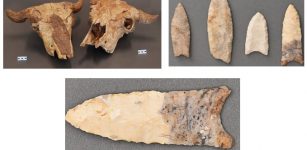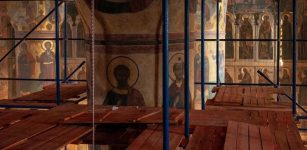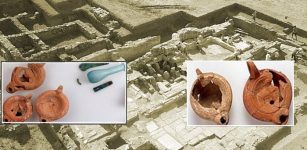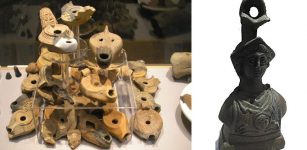Tashtyk People’s Crypt Reveals Death Masks And Elaborate Funeral Rites.
MessageToEagle.com – The Iron Age’s Tashtyk culture (1st century bce–5th century ce) lived in the middle Enisei River basin, including the Minusinsk Basin, the Krasnoiarsk area, and the eastern part of Kemerovo Oblast, Siberia. It was named after a burial ground excavated on the Tashtyk River, near the village of Bateni on the Enisei.
The culture is represented mainly by crypts and flat-grave burial grounds, primarily with cremations.
The physical appearance of the Tashtyk people has been preserved by a series of masks, some of them modelled, others cast from the dead.
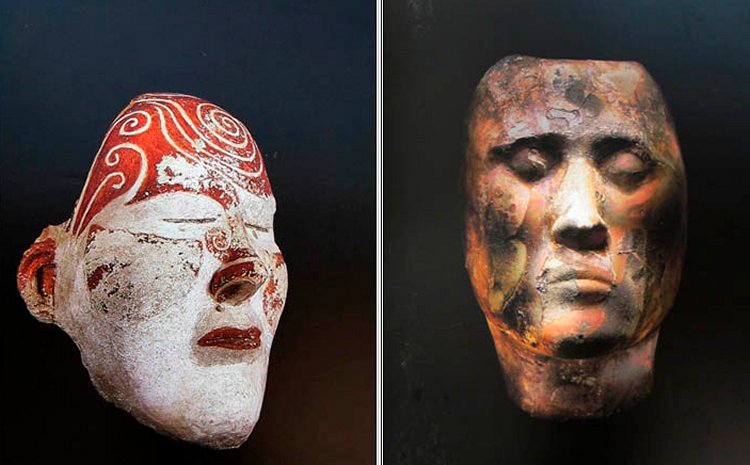
The Siberian Times reports that a crypt with up to 30 burials is giving archeologists fresh insights of intriguing ancient Siberians famed for their death masks which give us a clear idea of how they looked. Made of gypsum, the masks recreate the – at least partially – European look of the people who lived mainly around the Yenesei River.
The funeral system used in this crypt in Kemerovo region shows the burials to have been in the twilight of this race’s hold on this part of Siberia between the 2nd century BC and the 6th century AD.
Earlier their bodies were simply buried in the ground. But here at the Shestakovo-3 tomb, the bodies were substantially cremated, leaving only large bones. Then the remains were put inside dummy bodies made of leather or fabric.
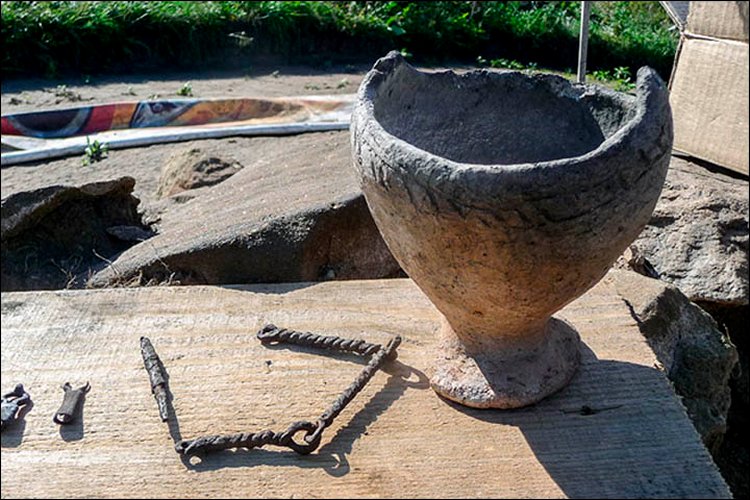
‘Next the gypsum mask – showing the likeness of the recently departed man or woman – was put on the dummy. In other crypts, miniature replicas of swords, arrows and quivers have been found.
Dr Pavel German, who led the excavation, said finds of ceramic vessels, bronze buckles, and elements of harnesses, were also made. The masks are fragmented but he hopes to restore at least some of the finds.
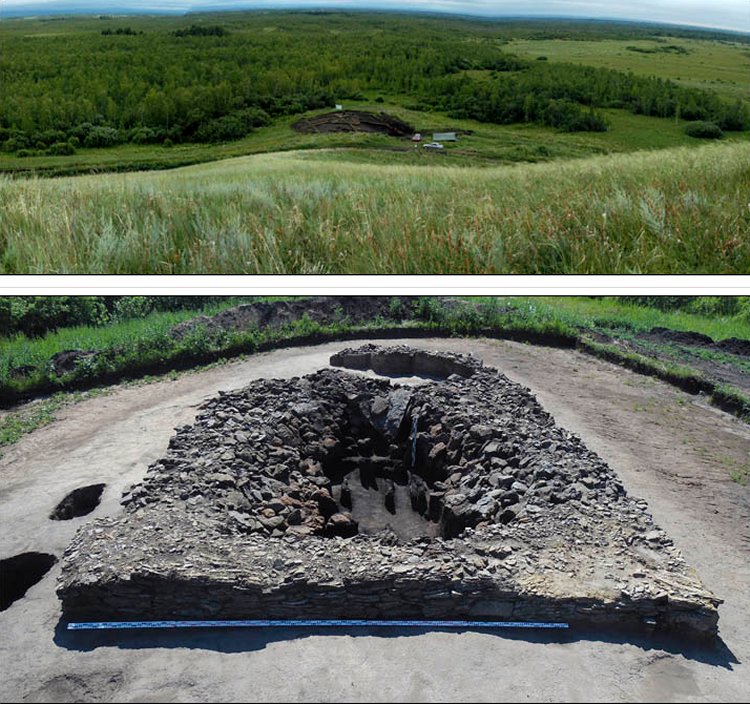
‘Such gypsum masks are excellently preserved in a dry environment, in sandy soil, as for example in Khakassia,’ he said. ‘Here, in Kemerovo region, the soil is more wet, besides there are tree roots everywhere. It doesn’t help the preservation. We have here a lot of fragments, but we hope to restore them. For example we’ve got rather big fragment – half of one mask.’
He believes his team found up to 20 of the precious death masks.
‘This crypt was very large, and we spent two seasons excavating it,’ he said. The area of the crypt inside is about 40 square metres. ‘According our preliminary estimation 30 people were buried there. That is, there can be even more masks.’
Remains of children were also found but without masks: they were buried outside the crypt. ‘The children mostly were not cremated, at least until the age of five and they were not buried inside the crypt as a rule. We have here several children burials near the wall of the crypt.’
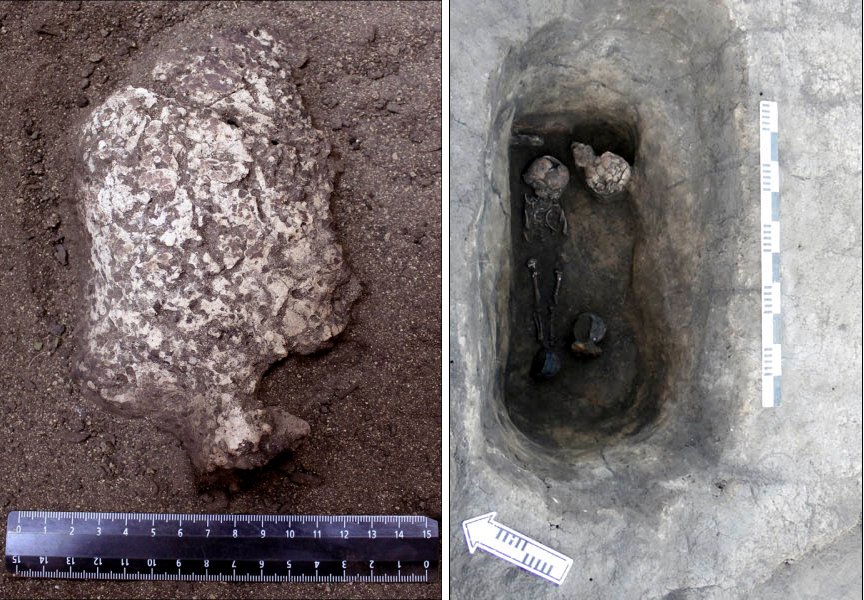
He explained the rituals of death as evidenced by the discoveries. ‘The crypt was made and it functioned for one year or more. First of all they dug a hole in the ground, built a stone wall around it, made a decking and covered this with logs. Then gradually the crypt was filled with the dummies (containing the remains of the dead).
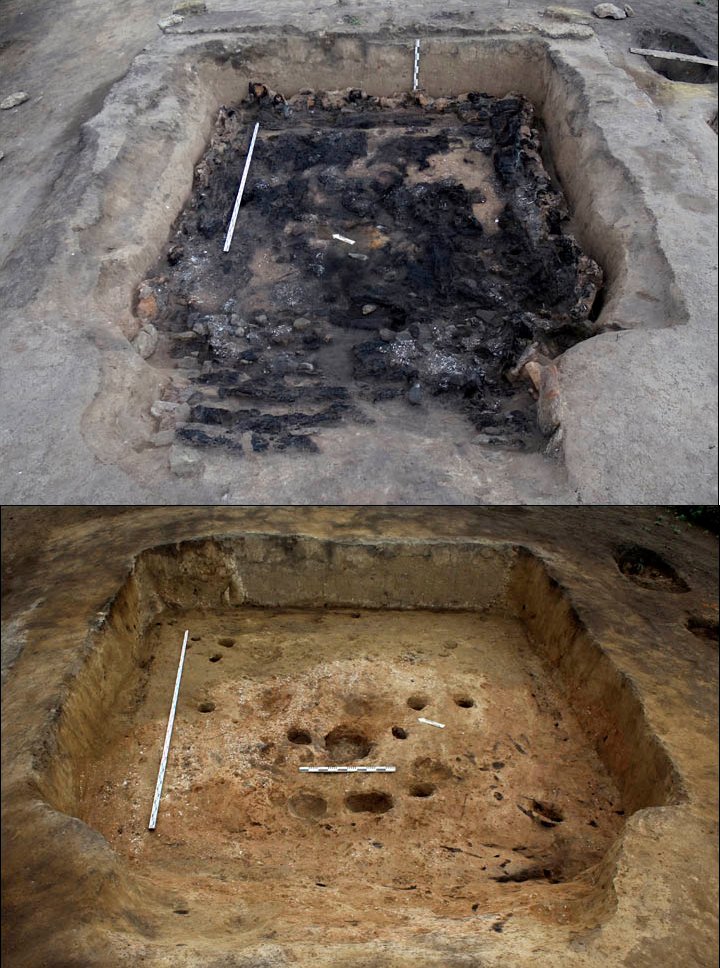
‘They held some rites there, funeral feasts. We cannot say exactly yet, how long this crypt functioned. Was it one year or two, or all the burials were made simultaneously. It is the the subject of scientific debate. Anyway, after the crypt was filled it was burned down. The wooden construction fell down and overlapped burials.’
He believes that treasures were robbed from the tomb.
‘In this particular crypt, though it is rather big, we did not find any astonishing things, like an abidance of bronze findings or the artifacts covered with the gold leaf, which would be logical for such a big crypt. We suspect that it was partially robbed before the burning down. Maybe the worthy things were taken away during some rites, like the initiation of youth.’
Dr German is from the Institute of Human Ecology in Kemerovo. It is part of the Siberian Branch of the Russian Academy of Sciences. Tashtyk death masks found earlier are held in the State Hermitage Museum in St. Petersburg, along with other museums.
Russian archaeologist Sergei Teploukhov, the first to study the Tashtyks in depth, suggested the culture was initially Indo-European dominated.
MessageToEagle.com
source:

